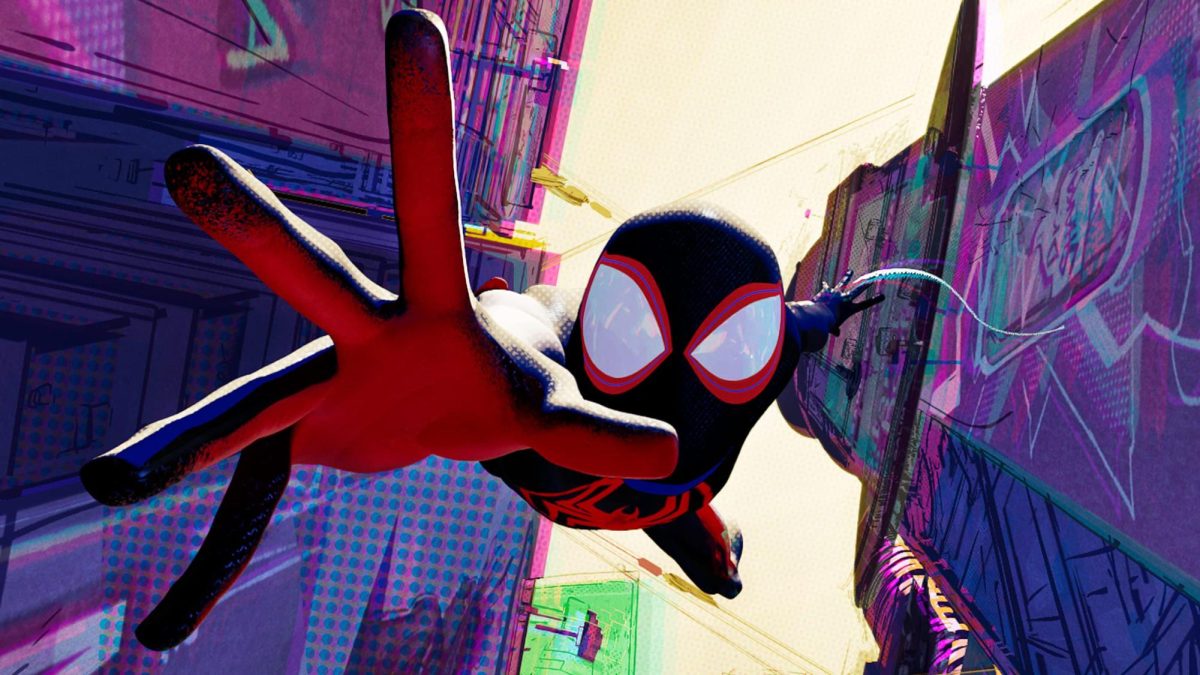This review contains spoilers.
Saying that “Spiderman: Into the Spider‐Verse” was an influential movie seems like a freezing-cold take nowadays. The universal adoration from the public can seem gratuitous, but the 2018 film truly did usher in a new era of animated movies. It showed Sony and Marvel that a Spiderman movie can make a profit even if Peter Parker isn’t the main character.
Moreover, it proved that straying from conventional animation styles can garner critical praise as well as a massive fanbase. Most importantly, it opened the door for a slew of unique animated features. A fan of the recent “Puss in Boots”? Caught the newest “Teenage Mutant Ninja Turtles” in theaters? You have this movie to thank.
“Spiderman: Across the Spider‐Verse” could never hope to overtake its predecessor in status, but it certainly comes close. The artwork has arguably become better, as the filmmakers introduced so many different characters that warrant their own style of animation.
The story is complex and fascinating, posing many more questions to unpack than its predecessor. Even the characters and their respective arcs were written terrifically. I don’t know how I’m going to wait another few years for the final movie of this trilogy, and that in and of itself makes “Across the Spider‐Verse” a success.
Story
I’d like to focus on a few main plot themes within this movie, starting with the idea that Spiderman’s attempts to juggle his normal life and his superhero life end in tragedy. We’ve seen it play out in the Tom Holland trilogy; that story ended with Parker embracing his superhero life over his normal one. The way that this movie tackles that conflict is endlessly fascinating, especially since embracing his superhero life essentially means sacrificing his father.
Seeing Miles Morales, the main character of the Spider-Verse movies, adamantly say repeatedly that he “can do both” and “do his own thing” feeds into the idea that he’s willing to fight this canon. Another theme that seems to seep into every crack of this film is the idea that Morales, out of the endless variants of Spider‐people, is inherently different from the rest. The movie explains this, showing that Morales’ DNA is not native to his home universe.
Even if I am not fully on board with this concept, the conflict that the idea creates is endlessly fascinating to me. Of course, the audience wants Morales to be confident in himself and prove that he can do things that any other Spider‐person can do. This is literally the last thing that his mother tells him in the movie.
However, how can Morales be like every other character and also prevent the canon event of his father dying? Moral questions such as this and fans’ theories hold me over until the third movie comes out.
Characters
Look at Morales, man. So inspirational. We’ve had two movies worth of content regarding this character, and he always ends the movie above where he started. This is a crazy sentiment given the movie’s cliffhanger, but seeing him facing his alternate self with his venom strike slowly powering up convinced me that he had grown.
Morales spent the movie desperate for his old friends and then found them. At last, he chose to abandon them to chase the ending that he wanted. If that doesn’t show his growth into independence and committing to himself, I don’t know what will. I just hope they stick the landing with his arc because it’s been a joy to see him develop.
I can’t mention them all, but the side characters also deserve a lot of credit for making this movie great. Gwen Stacy’s story is just as important in this movie, and I’m glad that we get to dive into her own conflicted reasoning for abandoning and lying to Morales. Their chemistry together is off the charts and seeing her finally rebel against antagonist Miguel O’Hara is so satisfying.
Hobie Brown and Pavitr Prabhakar were amazing additions to the crew, with humor and style that made me look forward to any scene they’re in. Let’s not forget our two villains as well; O’Hara’s design is one of the coolest I’ve seen, and his motivations deserve to be dissected in more paragraphs than I can write. The Spot, however, takes the proverbial villain cake for his design, increase in power, and overall motivation in taking down Morales.
Art
Even from the trailers, you could tell that the art team for this movie stepped up their game. Showcasing a whole Spider Society would naturally call for several characters and set pieces with their own concepts, designs, and even styles of animation. It’s a mountain of work to be done, and yet the team did not miss a beat.
- Stacy’s universe: Bright colors and melting pastels make up a lot of this setting, giving it a dreamier vibe than Morales’ Brooklyn. I’d love to live there — that’s all I’m saying.
- Brown’s design: The black and white and newspaper cutout animations just have their own uniqueness that I’m excited to see develop later.
- Mumbattan: A vertically built city has never been something I’ve thought about in terms of Spiderman, but holy cow, does it work! The Indian‐inspired touches make it all the more unique.
- The Go Home Machine: I really like the triangular panels it creates when it makes the web, and I feel like it doesn’t receive enough attention.
- Italian Vulture: Man, what a great first villain to reintroduce the multiverse with. His concept and design are so memorable; I hope we somehow get to see him again.
- Lego Universe: This movie incorporated Lego animation! The second Lego movie feels like ages ago, so this was really refreshing.
This was a great installment to a great trilogy. Now, pray to whatever deity you believe in that we get the finale within the next five years.





























